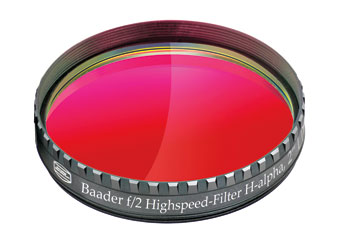What’s the difference between nebula filters and light-pollution filters?

Nebula filters block out most of the visible spectrum while transmitting the handful of finely tuned colors that emanate from the most luminous constituents of cosmic gas clouds: hydrogen atoms and
oxygen ions. Light-pollution filters, by contrast, are designed to block the colors emitted by typical streetlights and security lights while transmitting light from one or more types of astronomical
objects. In practice, some filters play both roles. Here are the types most commonly encountered:
· Broadband filters strike a balance between keeping “bad" light out and letting “good” light in. They are best suited for viewing galaxies and star clusters, whose own light spans the entire visible
spectrum.
· Narrowband filters more aggressively block light pollution, but at the cost of dimming star clusters and galaxies too. These filters transmit spectral bands that include hydrogen and oxygen emissions, making them both light-pollution and nebula filters.
· Oxygen-III filters transmit only one narrow slice of the spectrum, in which oxygen ions emit a greenish light. They particularly enhance views of planetary nebulae and a few supernova remnants.
· Hydrogen-beta filters transmit one blue-green emission line from hydrogen atoms. They are optimal for just a handful of extremely faint targets, such as the California Nebula and IC 434, the ribbon of
hydrogen gas in which the Horsehead Nebula resides.
— Joshua Roth
 0
0








Comments
You must be logged in to post a comment.